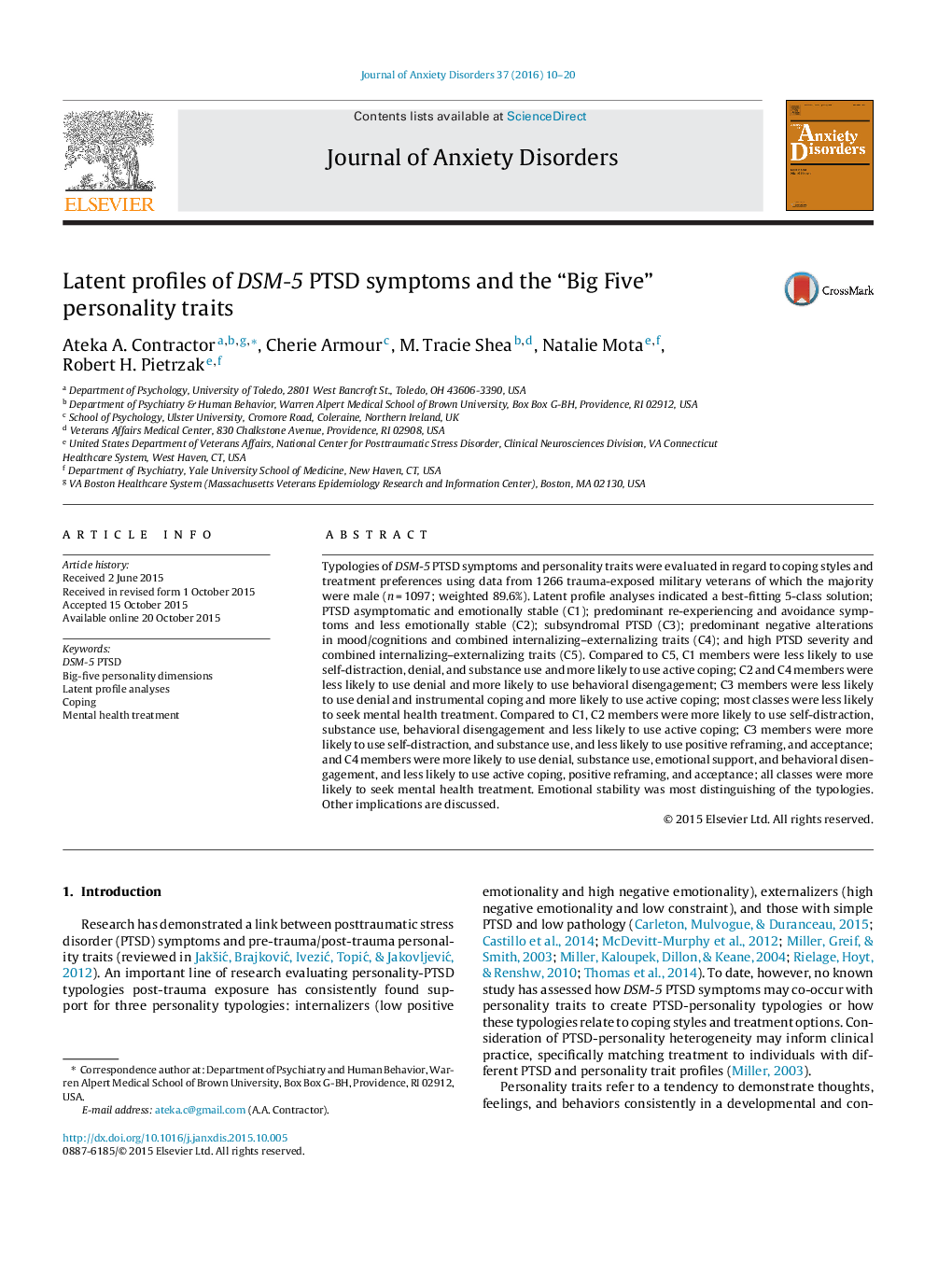| Article ID | Journal | Published Year | Pages | File Type |
|---|---|---|---|---|
| 909220 | Journal of Anxiety Disorders | 2016 | 11 Pages |
•We used a nationally representative sample of1266 trauma-exposed military veterans (NHRVS).•We found five discrete PTSD-personality typologies.•Typologies differed in DSM-5 PTSD cluster severity and some personality dimensions.•Emotional stability was most distinguishing among the PTSD-personality typologies.•Typologies differed in psychotherapy/medication utilization, denial, active coping, emotional and instrumental support, self-distraction, active coping, substance use, positive reframing and behavioral disengagement coping strategies.
Typologies of DSM-5 PTSD symptoms and personality traits were evaluated in regard to coping styles and treatment preferences using data from 1266 trauma-exposed military veterans of which the majority were male (n = 1097; weighted 89.6%). Latent profile analyses indicated a best-fitting 5-class solution; PTSD asymptomatic and emotionally stable (C1); predominant re-experiencing and avoidance symptoms and less emotionally stable (C2); subsyndromal PTSD (C3); predominant negative alterations in mood/cognitions and combined internalizing–externalizing traits (C4); and high PTSD severity and combined internalizing–externalizing traits (C5). Compared to C5, C1 members were less likely to use self-distraction, denial, and substance use and more likely to use active coping; C2 and C4 members were less likely to use denial and more likely to use behavioral disengagement; C3 members were less likely to use denial and instrumental coping and more likely to use active coping; most classes were less likely to seek mental health treatment. Compared to C1, C2 members were more likely to use self-distraction, substance use, behavioral disengagement and less likely to use active coping; C3 members were more likely to use self-distraction, and substance use, and less likely to use positive reframing, and acceptance; and C4 members were more likely to use denial, substance use, emotional support, and behavioral disengagement, and less likely to use active coping, positive reframing, and acceptance; all classes were more likely to seek mental health treatment. Emotional stability was most distinguishing of the typologies. Other implications are discussed.
